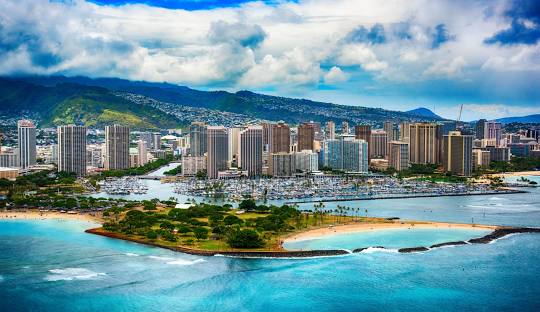
Honolulu: Hawaii’s Historic Capital and Pacific Hub
Posted by on
Honolulu, the capital of Hawaii, derives its name from the Hawaiian phrase for "sheltered harbor" or "calm port." The city's historic core, once known as Kou, covered the area from Nuʻuanu Avenue to Alakea Street and from Hotel Street to Queen Street, now the heart of downtown.
Honolulu’s natural harbor and strategic location contributed to its rise as an economic and political center in the Hawaiian archipelago and the broader Pacific region. The city became the capital of the Hawaiian Kingdom in 1845 and remained the seat of power after Hawaii became a U.S. territory in 1898 and later the 50th state in 1959.
One of the most defining moments in Honolulu’s history was the Empire of Japan’s attack on Pearl Harbor on December 7, 1941, which led to the United States entering World War II. Today, Pearl Harbor remains a major U.S. Navy base and is home to the United States Pacific Fleet, the world’s largest naval command.
According to the 2020 U.S. Census, Honolulu’s population was 350,964, while the Urban Honolulu Metropolitan Area housed over 1 million residents, making it the most populous city in Oceania outside of Australasia.
Honolulu’s tropical climate, stunning landscapes, and iconic beaches continue to attract millions of visitors. With over 711,000 tourists in 2022, it ranked as the tenth-most visited city in the United States, following destinations such as New York City, Miami, Los Angeles, and Las Vegas.
Blending history, military significance, and natural beauty, Honolulu remains Hawaii’s cultural and economic heartbeat, drawing global attention for both its past and present.